What Are Experiments In Quantitative Market Research?
Discover what experiments in quantitative research are, how they work, and why they’re essential in any modern marketing campaign, no matter your industry.

Similar cases:
What is quantitative market research in marketing?Understanding Research MethodologiesWhen it comes to understanding consumer behavior, numbers alone don’t always tell the full story; however, when they do, they tell it with precision, which is where quantitative market research is able to stand out. Within this realm, experiments are able to offer something particularly beneficial, the ability to uncover cause-and-effect relationships rather than just patterns or opinions.
Think of experiments as the “lab work” of marketing. They are a structured, measurable, and designed approach that reveals why one marketing choice works better than another. Whether it’s testing different ad creatives, product prices, or call-to-action phrases, experiments in quantitative research can turn gut feeling into statistically reliable insight. This latest guide explains what marketing experiments are, why they matter, and how you can run an effective experiment in quantitative research.
What are experiments in quantitative market research?
In quantitative market research, an experiment is a controlled study used to determine the effect of one or more variables on a specific outcome. The goal is to identify causation, not just correlation, so, for example, a company might want to know whether changing the color of the “buy now” button can increase clicks or whether a discount message leads to more conversions than one that offers free shipping.
Whatever the reason might be, setting up an experiment as part of your quantitative market research campaign can help you to isolate which variable is responsible for driving behavior. Most experiments in quantitative research are built upon three core elements:
Independent variables
These are the factors that you are able to manipulate, for example, the headline, price, color, or layout.
Dependent variable
This is the outcome that you will be measuring, such as the click-through rate, purchase intent, etc.
Control group
The control group is your baseline group that has only been exposed to the standard conditions, providing you with clear insight to compare changes against.
These three factors allow marketers to test hypotheses under controlled conditions, allowing them to draw clear conclusions about what impact changes on a product or service can have.
Why do experiments matter in quantitative market research?
In the fast-moving world of marketing, intuition and experience are invaluable, but they can also be misleading. Experiments in quantitative research help to bring scientific rigor to decision-making, allowing brands to test assumptions before investing heavily in creative or strategic changes.
Establish causality
Surveys and analytics often reveal what consumers think or do, while experiments reveal why. By manipulating one variable at a time, marketers can determine cause and effect, which provides a crucial advantage when deciding which strategies drive results.
Reduce risk
When new campaigns, packaging, or price models are tested experimentally, companies can validate concepts on a small scale before rolling them out broadly. This helps to minimize costly missteps and ensures the best results possible.
Improve ROI
Even small tweaks uncovered through experimentation, like a change of color, subject line wording, or image placement, can compound into measurable improvements in engagement, conversion, and revenue.
Support continuous optimization
Modern marketing thrives on iteration, and running an ongoing experiment helps you to turn insight generation into a regular habit. By making it a core part of your marketing, rather than a one-off exercise, you can ensure your business remains agile and competitive.
How to run an experiment in quantitative market research
Now you know the benefits that experiments in quantitative research can bring, how can you run a successful campaign?
Define your research question
Every strong experiment starts with a clear and measurable objective. Ask yourself what you’re hoping to learn and why it matters. For example, you might want to know whether personalizing an email subject line increases open rates, or if using video in a social ad drives more engagement than a static image.
The key is to frame your question so that it can be tested in controlled conditions. A well-defined question anchors your entire study and ensures your results will be both relevant and interpretable.
Develop a hypothesis
Once your question is clear, you need a hypothesis, which is a statement predicting what you expect to happen. This turns curiosity into a formal assumption that can be tested with data. For instance, you might hypothesize, “If we use personalized email subject lines, open rates will increase compared to generic ones.” Your hypothesis should be specific and measurable, linking the variable you plan to change with the outcome you want to observe.
Identify variables
Every experiment involves at least two key variables: the independent variable (the factor you manipulate) and the dependent variable (the outcome you measure). In a marketing context, the independent variable might be a price point, call-to-action, or ad creative, while the dependent variable could be click-through rate, conversions, or purchase intent.
Keep all other factors constant to isolate the true effect of your variable, as it is this control that gives experiments in quantitative research their strength and validity.
Choose an experimental design
There are several experimental designs available, depending on your objectives and resources. The simplest is A/B testing, where two variations (A and B) are compared to see which performs better, while if you want to test multiple factors at once, such as image, headline, and color scheme, multivariate testing can reveal which combination works best.
For real-world validation, field experiments test consumer behavior in natural environments like websites or stores, while lab experiments are ideal for controlled settings such as concept evaluations or prototype testing. Selecting the right design ensures that your experiment fits your research context and business goals.
Select participants carefully
Your results are only as strong as your sample, so choose participants who represent your actual target audience. This could mean segmenting by demographics, behaviors, or purchasing patterns, while using random or stratified sampling helps minimize bias and ensures that your findings are generalizable.
Execute the experiment
When it comes to knowing how to run an experiment in quantitative research, the execution is vital. Implementation involves exposing participants to the different versions of your test condition while keeping the process consistent across groups. Random assignment is crucial as participants shouldn’t know which version they’re viewing, and their placement should be unbiased.
This is where quantitative market research meets operational precision. No matter whether your experiment runs on an email platform, website, or ad channel, maintain consistency and monitor for external factors that might distort results.
Analyze the results
Finally, once your experiment has concluded, you need to ensure that you are analyzing the data carefully. The goal is not just to find a difference, but to confirm that the observed change was caused by your manipulation, not random variation. Once significance is established, interpret what it means in real-world terms: why did one version perform better, and what does that reveal about consumer behavior or decision-making?
Final thoughts
Experiments in quantitative research can transform your results and help empower your business to go beyond observation and uncover real causation. When you are able to understand how to run an experiment in quantitative research, you can make smarter, data-backed choices that elevate performance and help to maximize your return on investment.
Frequently Asked Questions
What’s the main difference between experiments and surveys in market research?
Experiments test cause-and-effect relationships by changing one variable and observing results, whereas surveys measure opinions or behaviors by asking structured questions. Both are valuable, but experiments reveal why changes occur, while surveys show what people think or do.
How large should my sample be when running an experiment?
It depends on your goal and effect size. For most marketing experiments, a sample of several hundred participants is ideal to achieve statistical reliability. Larger samples provide more confidence in your findings.
Can AI help improve experiments in quantitative research?
Yes. AI platforms can analyze responses faster, detect sentiment, and summarize insights from large datasets. AI can also assist in designing experiments and automating repetitive tasks, allowing researchers to focus on interpretation and strategy.
Continue reading
Top picks about AI-powered interviewing
Yasna Updates Reporting Feature
Create customized reports by asking simple questions, simplifying data analysis and merging insights.

Yasna Unveils Screening Feature
For Enhanced Respondent Experience and Data Quality Assurance

Yasna.ai Introduces AI Moderator 2.0
Smarter, More Culturally Aware, and Autonomous
